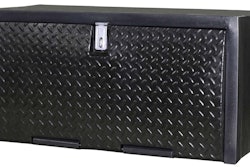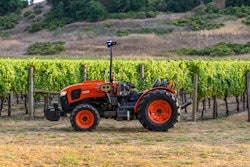
Part of caring for your clients’ landscaping needs is creating an environment that’s pleasing to humans, yet unattractive to pests. The good news is you don’t have to be a professional residential pest control expert to offer your clients basic natural pest control solutions.
By preparing lawns in the late fall and early winter, you help strengthen lawns and prevent the growth of unwanted flora and uninvited critters when spring arrives.
Here are tips and techniques from Jen McCauley, Western Exterminator.
Pests of concern
- White grubs: Grubs eat the roots near the surface of the soil, causing grass to die. The presence of white grubs often attracts birds, raccoons, skunks and moles.
- Cinch bugs: Cinch bugs destroy lawns by sucking the moisture out of grass blades.
- Rodents: Rodents hide in landscape debris and weeds, nest in unkempt areas, and may feed on other types of garden pests.
- Weeds: Weeds germinate in the fall to prepare for springtime growth.
- Fertilize: Local pest control companies often recommend the use of a natural winterizing fertilizer to promote lawn root development and pest resistance.

- Eliminate leaves: Fallen leaves are great places to hide for insects and rodents. Turn the leaves into mulch and apply it to the lawn as it acts as a natural fertilizer.
- Keep mowing: Use the highest setting on the mower in the late fall so the grass stays insulated and strong during the winter.
- Sow new seeds: If a client has cool-season lawns, reseed bare patches. For warm-season grasses, overseed with cool-season grasses.
- Go easy on the mulch: Mulch is popular for keeping weeds at bay in landscape features and garden beds. However, traditional mulch is also popular with pests. Use mulch sparingly and avoid placing it near a home or building. When selecting mulch, use a product that naturally repels insects, like cedar bark.
- Clean up food sources: If a client has plants or trees that bear fall fruit, pick up produce that falls to the ground so it doesn’t attract pests.
Pest prevention
As a landscaper, it’s not unheard of to encounter a pest infestation on a client’s property. When this happens, don’t be afraid to partner with a residential pest control service that uses natural pest control techniques. The techniques that the professionals use are tailored to the type of pest in question and eliminate unnecessary pesticide use, which helps keep a landscape and the environment safe and healthy.
A healthy lawn prevents the presence of unwanted pests. By employing smart lawn care techniques, you’ll simplify future landscape care and go a long way toward preventing pests that can destroy your hard work. Never hesitate to call a local pest control service that uses green practices to help maintain a pest-free landscape that’s in line with your clients’ wishes.











